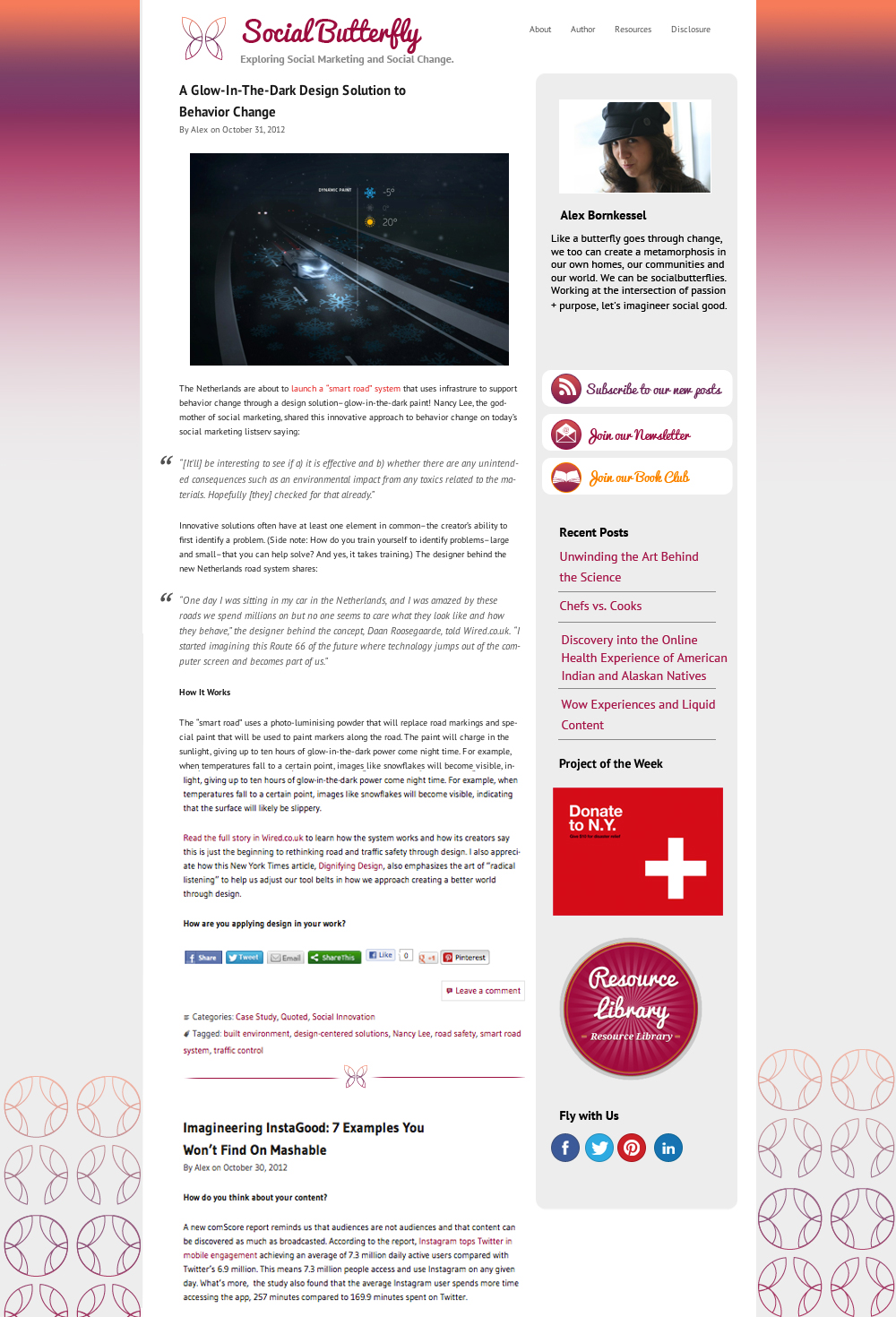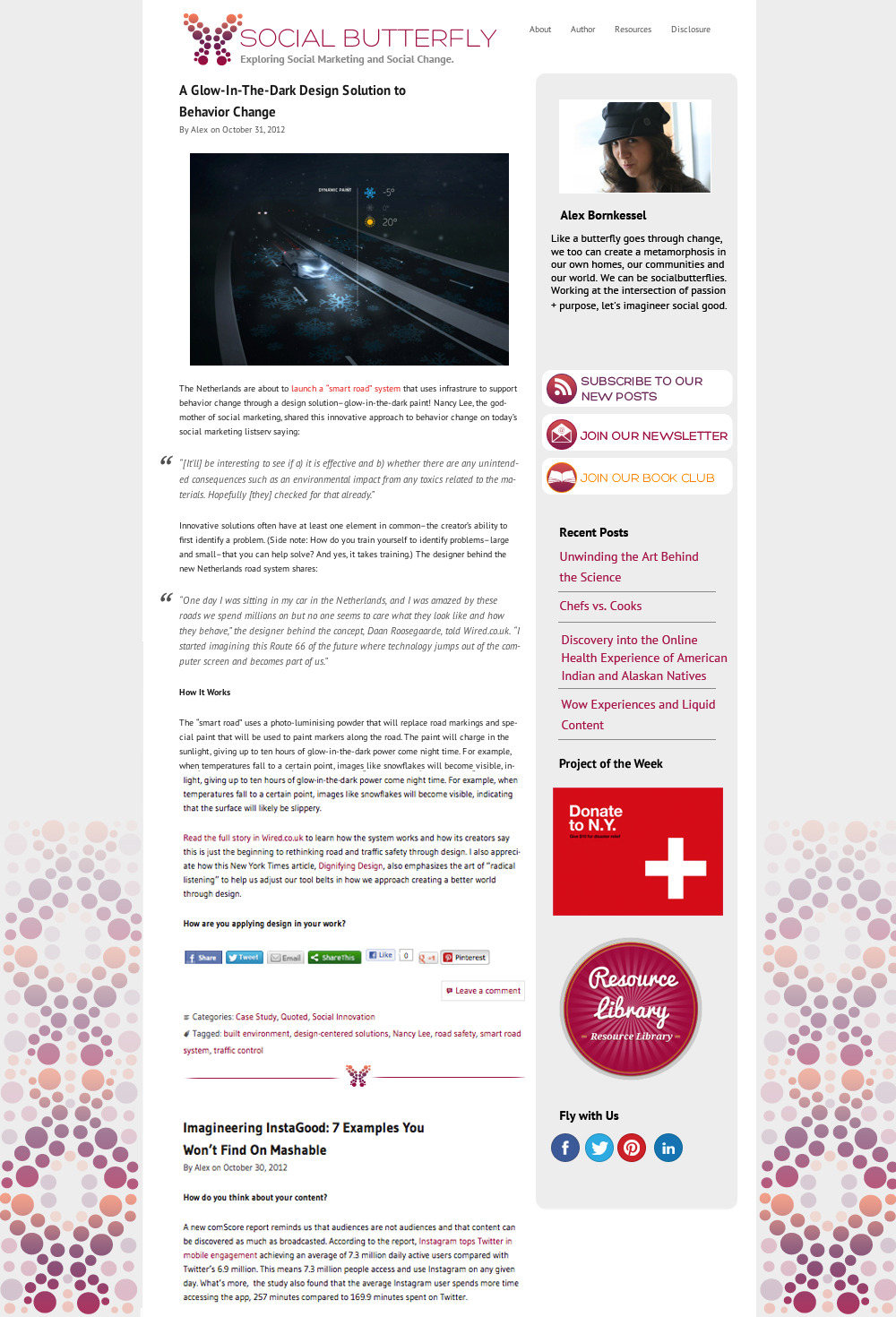If you know social marketing extraordinaire Nancy Lee, then you have heard this saying. Recently, on the social marketing listserv, some dialogue has been shared in response to Nancy Lee and Philip Kotler’s article in Stanford’s Innovation Review titled “Best of Breed,” which looks at corporate social marketing. This could be its own post, but alas, I want to focus on the message of being fun, popular and easy.
Why? Because whether it’s social marketing or corporate social marketing, you are still working to effectively change or influence behavior for good–and an effective way to do so is making your desired behavior fun, popular and easy–which is exactly what started bubbling through on the social marketing list serv as others started sharing some of their favorite fun, popular and easy social marketing initiatives. Enjoy–and when you find yourself running around ragged, ask yourself: Is anyone having fun? Is this easy for people? and go from there.
The Piano Staircase
To encourage passerbyers to take the stairs rather then the escalator (and thus promote physical activity), this group turned the stairs into a piano–whenever you stepped on a stair a different sound would echo–in effect, making taking stairs more exciting than an everyday escalator. I can’t find the source, but it apparently had a 60% success rate. Who’s behind it? Volkswagon. Apparently, Volkswagon has been trying out some experimental marketing based around “The Fun Theory” to see if they could create desired behaviors if the action was made fun. You can read more about the piano staircase and other initiatives such as the recycling arcade and more at TheFunTheory.com.
httpv://www.youtube.com/watch?v=2lXh2n0aPyw
The Pink Glove Dance
You may have seen this one already, as it’s been circling the blogosphere for a while. But, it’s an example of everyday people–hospital employees–finding a way to make their job fun while communicating a message–that you aren’t alone when taking steps to prevent breast cancer, like getting a mammogram.
httpv://www.youtube.com/watch?v=OEdVfyt-mLw
Musical Hand Sanitizer
Aas part of Volkswagon’s initiative, they are hosting an awards program on the best “fun” applications for healthy and good behaviors. One entry was a University who had installed hand sanitizers to prevent the spread of germs during the flu season. They found few students using them. Thus, they adopted the fun theory and installed some sounds. Each time someone went for hand sanitizer, a funny noise was created. Results? With the sounds included, students were seven times more likely to use the germ-reducing resource.
httpv://www.youtube.com/watch?v=p9nCRJo73oI&feature=player_embedded

Pedestrian TV Traffic Light
In this example, you get some free entertainment while waiting to cross the street. Instead of staring at a red outline of a person wishing it to change with your desired mind control, this traffic light shows TV clips–vidoes from YouTube, funny clips from TV shows, etc. This way, the hope is that you’ll actually wait until it’s safe to cross the street.
Make Your Watermark
Design you own bottle at the vending machine. Granted, I know bottles and paint on bottles isn’t good for the environment. But if you can’t quite get that change initiated, then check out what this group did. To encourage people to buy water over sugary pop or juices form the vending machine, they enabled it so people can design their own water bottle from the vending machine at the point-of-purchase. Now that’s easy, and fun!
Fun, Popular and Easy…Online?
More examples are found on the FunTheory.com Web site mentioned earlier, and I have to admit–it’s fun just looking through them. But, my mind started going: How can you make your online and social media communications fun, popular and easy to help you achieve your behavior change mission? Now, that’s a weighty question. Then, I started thinking about what is it in a Web or social media behavior change initiative that makes it fun, popular and easy:
- FUN: Community-based, drive accountability of others through accountability, collaborative in nature
- Example: Certain online communities help training for a 5k easier by focusing on accountability or making the desired behavior fun by making it social. Other communities, such as the Sister to Sister Foundation’s online community focusing on healthy behaviors for heart health amongst women. These type of communities make healthy behaviors fun by creating accountabilty and making the behavior social.
- POPULAR: Driven by influencers and respected peers in the community or content area the desired behavior resides.
- Example: AIDS.gov video-storytelling. AIDS.gov encouraged state officials to create their video on why its important to get tested for HIV. Another example? HHS’ flu PSA contest. Not only was this driven and announced by the HHS Secretary herself, but it was also supported and promoted by all of HHS’ agencies. And it’s winner–come on, who’s more popular than a rapping doctor?
- EASY: This may be the most important when it comes to the online arena. Because, for people to use the technology combined with the messages, etc., the technology must first work. It must incorporate usability best practices, be accessible and depending on your audience, address literacy issues, including technology literacy. You technology could be great, but if it’s too complicated and no one uses it, it’s just techology.
- Example: Most recently, AIDS.gov hosted the “Face AIDS” campaign asking people to join in. The effort involved a few steps, but AIDS.gov made it easy and fun by creating a collective flickr account to display all the images. Here’s a thought: Some social media is easy to adopt. one click and your a fan, one click and you are a follower. One click, and you’ve downloaded a healthy recipe book. One click and you have a mobile app to track your physical fitness. How can your organization leverage these easy tools for behavior change?
What about you? What are some of your favorite fun, popular and easy social marketing efforts? Any of those take place online?





